Pronunciation [kʼiˈtʃeʔ] Region Central highlands | Native to Guatemala Ethnicity K'iche' | |
 | ||
Native speakers (2.3 million cited 1991–2000) Language family Mayan
Eastern (Quichean–Mamean)
Greater Quichean
Quichean
Quiché–Achi
K’iche’ | ||
Guatemala speaking in k iche language about guatemalan food
K’iche’ ([kʼiˈtʃeʔ], also Qatzijob'al "our language" to its speakers), or Quiché (/kiːˈtʃeɪ/), is a Maya language of Guatemala, spoken by the K'iche' people of the central highlands. With over a million speakers (some 7% of Guatemala's population), K'iche' is the second-most widely spoken language in the country after Spanish. Most speakers of K'iche' languages also have at least a working knowledge of Spanish.
Contents
- Guatemala speaking in k iche language about guatemalan food
- Dialects
- Phonology
- Stress
- Vowels
- Consonants
- Syllabic structure
- Orthography
- Morphology
- Pronouns
- Verbs
- Voice and derivation
- Syntax
- Babytalk
- References
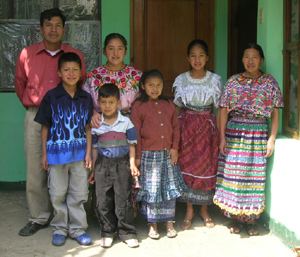
The Central dialect is the most commonly used in the media and education. The literacy rate is low, but K'iche' is increasingly taught in schools and used on radio. The most famous work in the Classical K'iche' language is the Popol Vuh (Popol Wu'uj in modern spelling).
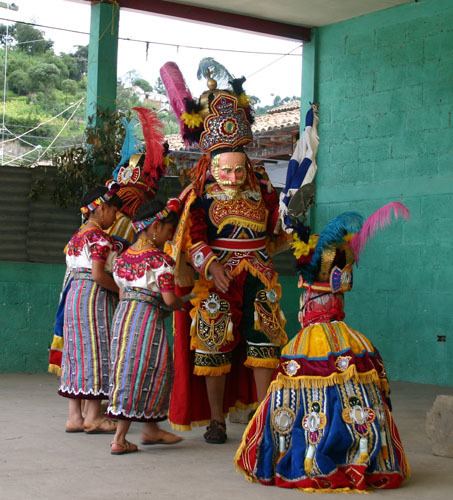
Dialects
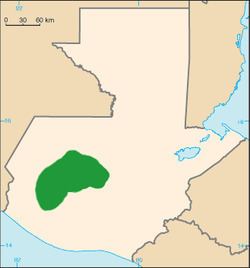
Kaufman (1970) divides the K'iche' complex into the following five dialects, with the representative municipalities given as well (quoted in Par Sapón 2000:17).
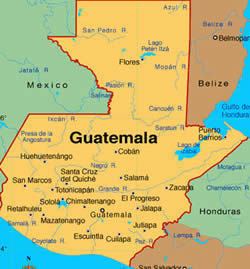
The Nahualá dialect of K'iche' shows some differences from other K'iche' lects: Nahualá preserves an ancient Proto-Mayan distinction between five long vowels (aa, ee, ii, oo, uu) and five short vowels (a, e, i, o, u). It is for this conservative linguistic feature that Guatemalan and foreign linguists have actively sought to have the language called "K'ichee'," rather than K'iche' or Quiché.
Phonology

K'iche' has a rather conservative phonology. It has not developed many of the innovations found in neighboring languages, such as retroflex consonants or tone.
Stress
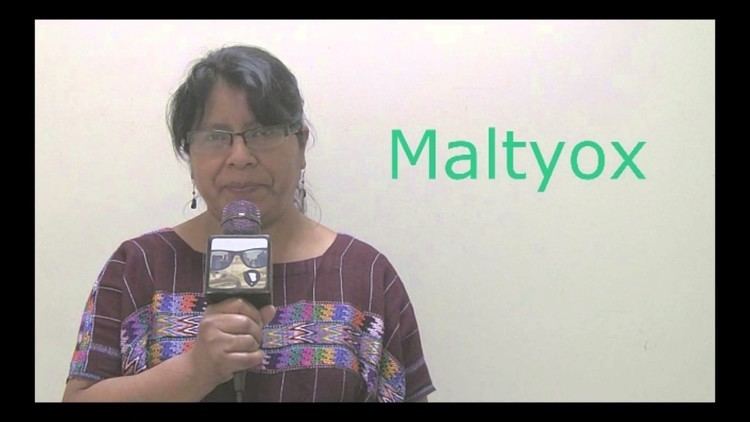
Stress is not phonemic. It occurs on the final syllable, and on every other syllable before the final in an iambic pattern.
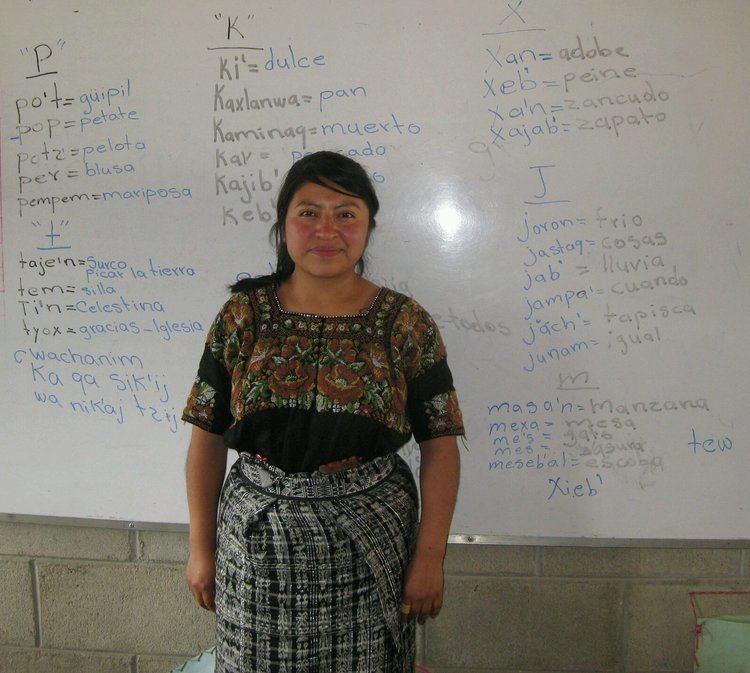
Unstressed vowels are frequently reduced (to [ɨ] or [ə]) or elided altogether, often producing consonant clusters even at the beginnings of words. For example, sib'alaj "very" may be pronounced [siɓlaχ], and je na la' "thus" [χenðaʔ].
Vowels
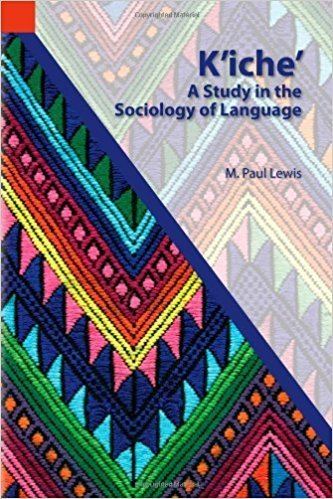
K'iche' dialects differ in their vowel systems. Historically, K'iche' had a ten-vowel system: five short and five long. Some dialects (for instance, Nahualá and Totonicapán) retain the ten-vowel system. Others (for instance, Cantel) have reduced it to a six-vowel system with no length distinctions: short /a/ has become /ə/ in these dialects, and the other short vowels have merged with their long counterparts. Different conventions for spelling the vowels have been proposed, including by the Proyecto Lingüístico Francisco Marroquín, the Summer Institute of Linguistics and the Academia de Lenguas Mayas de Guatemala. The table below shows the two vowel systems, and several of the spelling systems that have been proposed.

Vowels typically undergo syncope in penultimate syllables, allowing for a wide array of complex onsets. Diphthongs are found in recent loanwords.
Consonants
K'iche' has both pulmonic stops and affricates, p /p/, t /t/, tz /ts/, ch /tʃ/, k /k/, and q /q/, and glottalized counterparts b’ /ɓ/, t’ /t’/, tz’ /ts’/, ch’ /tʃ’/, k’ /k’/, and q’ /q’/. The glottalized /ɓ/ is a weak implosive, while the other glottalized consonants are ejectives. The pulmonic stops and affricates are typically aspirated.
In West Quiche, the approximants l /l/, r /ɻ/, y /j/, and w /w/ devoice and fricate to [ɬ], [ʂ], [ç], and [ʍ] word-finally and often before voiceless consonants. In some dialects, intervocalic /l/ alternates between [l] and [ð], a highly unusual sound change. The fricative [ð] is most common between the vowels o and a and between two o's, and occurs more often than not between two a's.
Syllabic structure
Complex onsets are very common in K'iche', partially due to the active process of penultimate syncope. Complex codas are rare, except when the first member of the complex coda is a phonemic glottal stop, written with an apostrophe. The sonorants /m, n, l, r/ may be syllabic.
Orthography
Historically, different orthographies have been used to transliterate the K'iche' languages. The classic orthography of Father Ximénez who wrote down the Popol Vuh is based on the Spanish orthography and has been replaced by a new standardized orthography defined by the ALMG (Academia de Lenguas Mayas de Guatemala). Ethnohistorian and Mayanist Dennis Tedlock uses his own transliteration system which is completely different from any of the established orthographies, but this system will not be given here.
Morphology
Like other Mayan languages, K'iche' uses two sets of agreement markers — known to Mayanists as "Set A" and "Set B" markers — which can appear on both nouns and verbs. "Set A" markers are used on nouns to mark possessor agreement, and on verbs to agree with the transitive subject (ergative case). "Set B" markers are used on verbs to agree with the transitive object or the intransitive subject (absolutive case).
Pronouns
K'iche' distinguishes six pronouns, classified by person and number. Gender and case are not marked on pronouns. Pronouns are often omitted, as subject and object agreement are obligatorily marked on the verb.
Verbs
Verbs are highly morphologically complex, and can take numerous prefixes and suffixes serving both inflectional and derivational purposes.
The table below shows the inflectional template of a K'iche' verb. Agreement follows an ergative/absolutive pattern. Subjects of transitive verbs are indexed using Set A markers. Intransitive subjects and transitive objects are indexed using Set B markers. Aspect and mood are also indicated, as is movement: the prefix ul- in the movement slot indicates movement towards the speaker, while the prefix e- (or b'e- in some varieties) indicates movement away.
The last morpheme on a verb, the so-called "status suffix," is a portmanteau morph whose form determined by a rather complicated set of rules. Relevant factors include:
Voice and derivation
The examples above involve verbs with simple stems. Verb stems may also be morphologically complex. Complex stems may involve voice suffixes
or derivational suffixes, many of which form verb stems from other parts of speech. For instance, the versive suffix -ir or -ar forms verb stems from adjectives: utz "good," -utz-ir- "get good"; nim "big," -nim-ar- "get big." Multiple suffixes can appear within a single stem: -nim-ar- "get big," -nim-ar-isa- "enlarge (something)," -nim-ar-isa-x- "be enlarged."
Syntax
As with all Mayan languages, K'iche' has an ergative pattern of verb agreement, and often uses verb-object-subject (VOS) word order. Most modern speakers use SOV, SVO, and VSO word orders interchangeably. Language purists have tried to preserve the traditional verb-initial word order, while influence from Spanish (an SVO language) promotes a subject-initial order.
Babytalk
Contrary to the way many other languages use high pitch in Child directed speech (babytalk), K'iche' babytalk (BT) has been shown not to use high pitch in this speech register.
